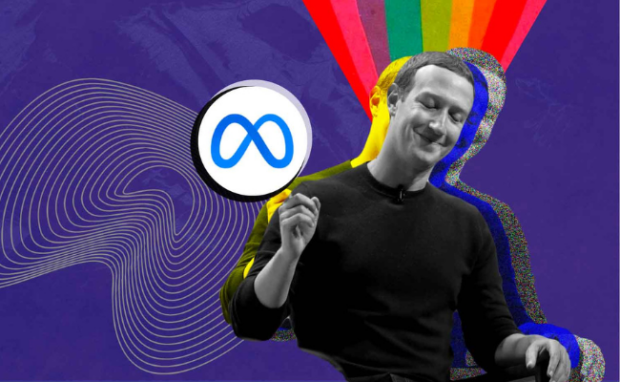Meta released a ‘human-like’ AI image-creation model
On Tuesday, Facebook company Meta Platforms announced it would open access to a new “human-like” artificial intelligence model. According to Reuters, the new Meta AI system can more accurately analyze and complete unfinished images than existing models. As a result, it significantly reduces errors common to AI-generated images.
CEO Mark Zuckerberg said sharing models by his company’s researchers helps spur innovation. As a result, the tech firm and the world benefit by spotting safety issues and reducing costs. Soon, this technology could significantly improve future AI image generators.
This article will elaborate on the new Meta AI program for researchers. Then, I will discuss the company’s other artificial intelligence projects since it placed this technology as a part of its long-term objectives.
How does the new Meta AI work?
Today we're releasing our work on I-JEPA — self-supervised computer vision that learns to understand the world by predicting it. It's the first model based on a component of @ylecun's vision to make AI systems learn and reason like animals and humans.
Details ⬇️
— AI at Meta (@AIatMeta) June 13, 2023
On June 13, 2023, Meta published a blog explaining its Image Joint Embedding Predictive Architecture. Meta’s Chief AI Scientist, Yann LeCun, created I-JEPA to overcome the limits of our most advanced AI systems.
Specifically, the new model focuses on completing digital images based on abstract representations of other images. In other words, the new Meta AI model completes images by filling them in like a human would.
Let’s say a picture shows a table with its other parts out of frame. We can guess what it looks like beyond borders based on the visible parts and other tables in our memories.
Similarly, the new Meta algorithm uses common sense background about the world to turn it into a digital representation. Then, it could complete images more accurately than other models.
In contrast, most image completion systems refer to existing pixels. For example, other AI systems may complete a cut-off white signboard with a white part without text.
As a result, Meta’s blog says other methods “may be prone to mistakes a person would never make because they focus too much on irrelevant details instead of capturing high-level predictable concepts.”
You may also like: Mark Zuckerberg Reviews Apple Vision Pro
One of the most notorious errors involves human hands. Many image-generating AI programs add too many fingers, put under five, or make other mistakes.
Meta chief exec Mark Zuckerberg told investors in April that sharing research helps spur innovation. Also, it facilitates finding safety gaps and lowering costs:
“For us, it’s way better if the industry standardizes on the basic tools that we’re using, and therefore, we can benefit from the improvements that others make,” he said. Moreover, Reuters said Meta executives dismissed warnings about the potential dangers of this technology.
What are Meta’s other AI projects?

Photo Credit: analyticsindiamag.com
Meta Platforms is a huge proponent of artificial intelligence development. Nowadays, it focuses more heavily on integrating AI into its products and services and publishing open-source research.
Meta declined to sign the open letter asking for a pause on AI research. In contrast, other tech leaders from OpenAI, Microsoft, and Google supported the petition and compared its risks with wars and pandemics.
Its lead AI expert, Yann LeCun, is one of the “godfathers of AI.” He prefers building safety checks into AI systems instead of falling for “AI doomerism.” Hence, the company announced these other projects:
- A program that will enable customers to modify photos using text prompts and share them in Instagrams stories.
- Also, the company will create AI agents with different capabilities and personalities for helping and entertaining clients.
- Meta will hold an internal hackathon in July 2023 focused on generative AI.
- Zuckerberg also emphasized his commitment to publishing research and sharing AI findings with open-source communities.
You may also like: Meta Quest 3 Launching Soon
The CEO also encourages employees to use generative AI in the office. Moreover, he provided a productivity assistant called Metamate to help them perform tasks and answer questions based on internal company data.
Conclusion
A new Meta AI system uses common sense algorithms to complete digital images more accurately than previous models. Also, the company offers it as an open-source program for researchers.
Meta Platforms says sharing researchers benefits the company by facilitating safety risk identification and cost reduction. More importantly, it benefits everyone else by furthering AI development.
You may read more about the Image Joint Embedding Predictive Architecture by reading the arXiv paper. Moreover, you can learn more about the latest digital trend at Inquirer Tech.